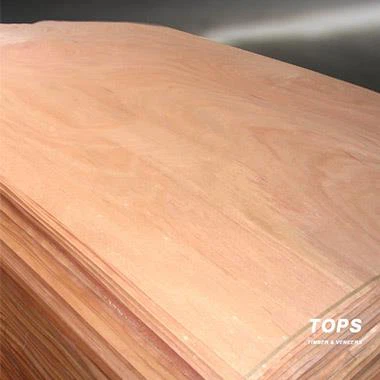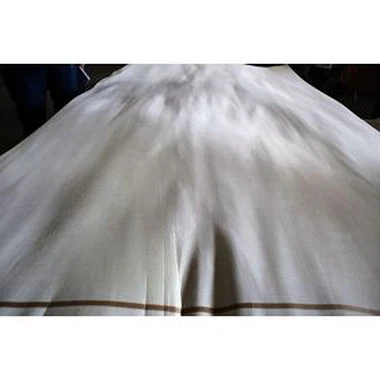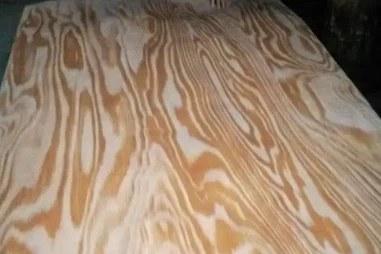Product Parameters
|
Wood Name: |
Okoume, Okume, Okoumé |
|
Botanic Name: |
Aucoumea klaineana Pierre |
|
Origin: |
Republic of Congo |
|
Thickness: |
0.2 – 1.5 mm |
|
Size: |
4'x8', 4'x6', 3'x7', 3'x6', 5'x8', 6'x8', 6'x9', 4'x10', 5'x10', customized |
|
Grain: |
Long Grain, Cross Grain / Short Grain |
|
Density: |
0.45 |
|
Grade: |
A/B/C/D/E |
|
Grading Rule: |
IHPA standards |
|
Certification: |
BV DDS |
|
Application: |
Panels (Plywood, MDF, blockboard, etc.), furniture, doors |
What is Natural Wood Veneer Okoume Face Veneer
Natural Wood Veneer Okoume Face Veneer, a thin slice of wood derived from the Okoume tree (scientifically known as Aucoumea klaineana), hails from the lush forests of west-central Africa, mainly found in regions like Gabon, Equatorial Guinea, and the Republic of Congo. Measuring between 0.26 and 0.30 mm in thickness, this veneer is adept at enhancing surfaces with its smooth and visually appealing finish.
Known by various names, including Gabon, Angouma, Gaboon, Uume, and Zouga, Okoume veneer predominantly goes by its native term due to its origins among the Fang people of Gabon.
Sporting a light to medium mahogany hue, Natural Wood Veneer Okoume Face Veneer showcases a heartwood ranging from pale pink to light brown, complemented by a narrow strip of greyish-white sapwood. Its colour matures and deepens over time, especially with exposure to light. The grain pattern varies from straight to slightly wavy or interlocked, occasionally revealing a striped or mottled appearance when quarter-sawn. Its uniformly fine texture allows for a stunningly lustrous surface when polished.
Advantages of Natural Wood Veneer Okoume Face Veneer
Natural Wood Veneer Okoume Face Veneer has many benefits that make it a suitable choice for furniture making. Here are some of the reasons why you should consider using Okoume face veneer for your next project:
It has a consistent colour and texture can create a uniform and elegant look for your furniture pieces.
It has good durability for outside use, as it is rated moderately durable and resistant to decay and insect attack.
It is easy to work with, as it has a low density and a high silica content that reduces the blunting effect on cutters. It also glues and finishes nicely.
It is environmentally friendly, as it comes from a sustainable source that follows the principles of restricted wood harvesting and natural forest regeneration. Okoume is a key timber species sourced sustainably from well-managed Gabonese forests.With a minimal carbon footprint, Okoume's rapid growth and carbon dioxide sequestration, coupled with its low energy and chemical processing needs, make it an environmentally conscious choice.Embracing biodegradability and recyclability, Okoume can effortlessly undergo composting or find new life in various applications.Versatile in application, Okoume face veneer lends itself to a spectrum of uses - interior and exterior, including furniture, cabinetry, musical instruments, window and door frames, doors, and cladding.
Applications of Natural Wood Veneer Okoume Face Veneer
Veneer: It's renowned for protecting plywood, particleboard, and other textures to create a smooth and attractive finish. It's also used for edge lining to hide exposed edges.
Plywood: Okoume veneer is perfect for producing plywood due to its constant quality and easy slicing. It's used in furniture, cabinetry, flooring, and boatbuilding because of its wetness, resistance and strength.
Boatbuilding: Its perfect water-resistant grades and flexibility make it a favoured for crafting boat hulls and decks. Its weightless character improves boat speed and fuel efficiency and can be covered for counted durability.
Musical instruments: Used in guitars, drums, violins, and pianos, Okoume veneer delivers a warm sound and beautiful impression, often mixed with other woods for various styles.
Furniture: Okoume veneer lends a classic and elegant look to furniture like tables, chairs, cabinets, and beds. It's long-lasting, easy to hold, and can be customised with colours or finishes.
Interior millwork: In mouldings, trim, doorways, windows, and stairs, Okoume veneer sweetens the look and significance of internal spaces, often paired with additional wood for a sophisticated finish.
Okoume face veneer is formed in Gabon, where the government guarantees the availability and sustainability of raw materials. The manufacturing procedure of Okoume face veneer is as follows:
The first stage is to harvest the Okoume logs from the woods of west-central Africa, where the species is native and ample. The logs are then transported to the Special Economic Zone of Gabon, where the government assures the availability and sustainability of the raw material.
The second stage is to debark the logs and cut them into suitable lengths for peeling. The logs are soaked in hot water to ease the wood fibres and make them easier to peel.
The third stage is to peel the logs into thin veneer sheets using rotary peeling machines. The veneer consistency can vary from 0.20 mm to 0.80 mm, depending on the customer's essentials. The veneer is then dried using veneer mesh dryers and humidity management systems to reduce the moisture content to 10–13%.
The fourth stage is sorting, grading, and packing the veneer sheets according to the quality standards and specifications. The veneer sheets are then ready to be exported to various markets, especially in Asia and Europe, where they are used for making plywood, furniture and other products.
How to Choose Natural Wood Veneer Okoume Face Veneer
When choosing Okoume veneer for your project, there are some factors to consider, such as:
Quality:
Highest quality "A" - Smooth, clear surface with no defects, knots, or blemishes.
Moderate quality "B" - Offers a level of quality and appearance between A and C grades.
Moderate quality "C" - Offers a level of quality and appearance between B and D grades.
Lowest quality "D" - Rough surface with numerous imperfections, knots, and blemishes.
The chosen grade impacts the veneer's price and performance, so choose according to your needs and budget.
Size: Okoume veneer comes in different dimensions and thicknesses, influencing the quantity, cost, and ease of installation. Consider the substrate size and your project's requirements when selecting the veneer size.
Source: The origin and certification of Natural Wood Veneer Okoume Face Veneer affect its sustainability and environmental impact. As Okoume trees are vulnerable to habitat loss and overexploitation, choosing veneer from reputable sources adhering to CITES and IUCN standards is crucial. This ensures responsible sourcing and contributes to conservation efforts.
Frequently Asked Questions
Hot Tags: natural wood veneer okoume face veneer, China natural wood veneer okoume face veneer manufacturers, suppliers, factory, reconstituted wood veneer, Sliced Oak Veneer, alpi wood veneer, red elm veneer, Fineline Reconstituted Wood Veneers, recon face veneer










